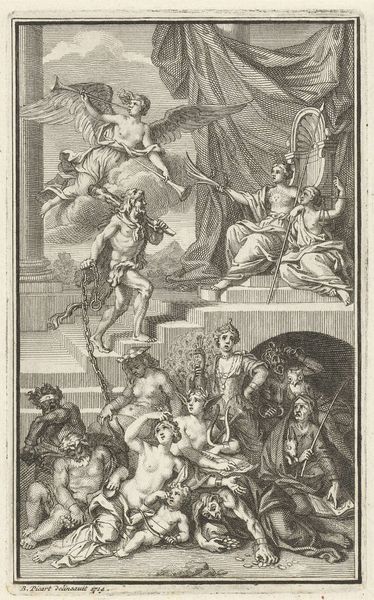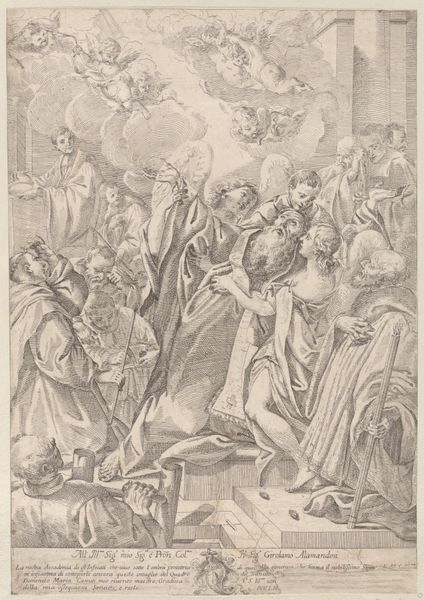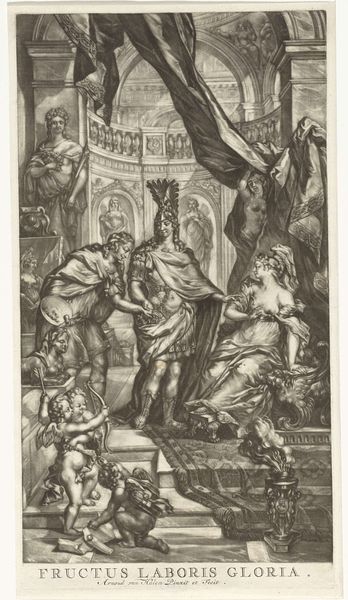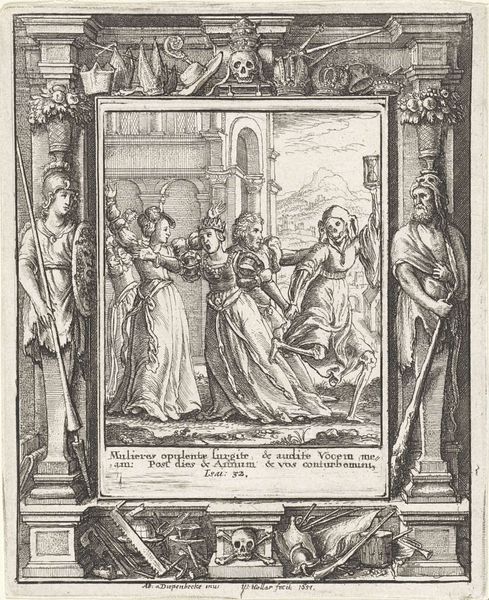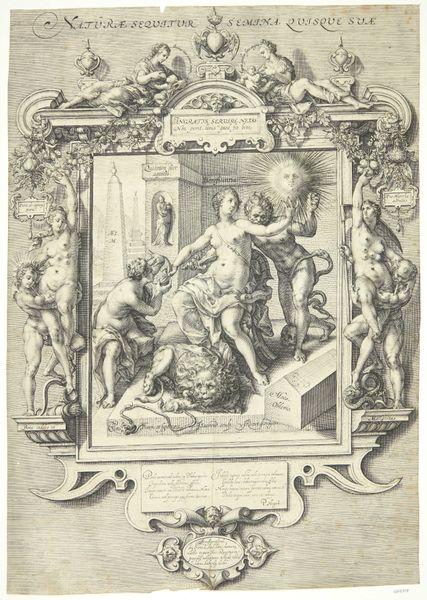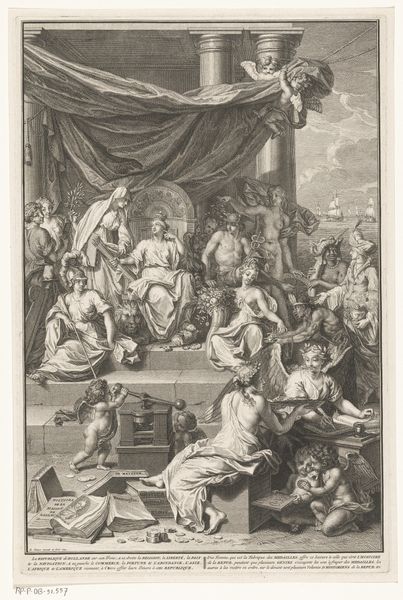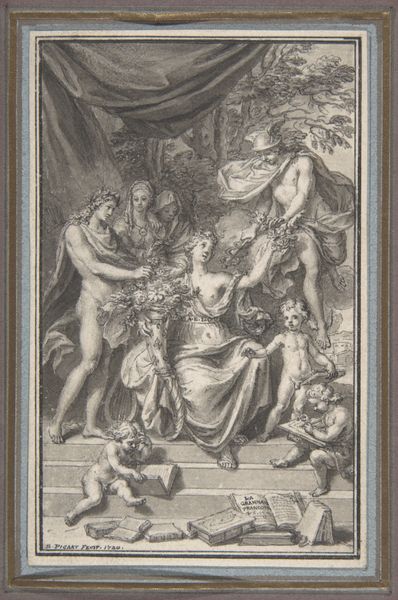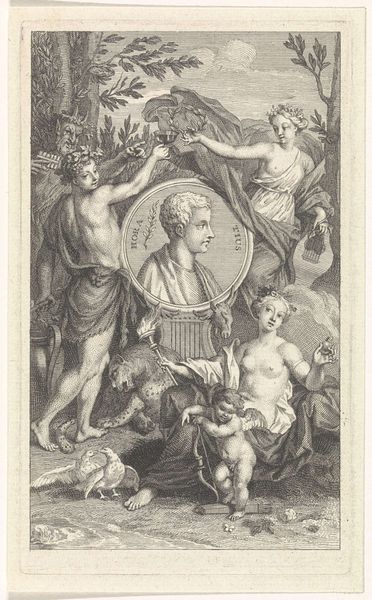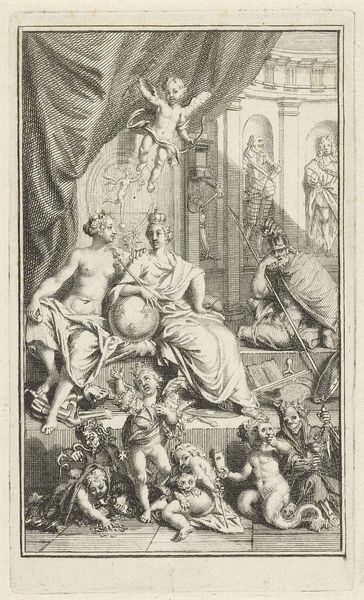
print, etching, engraving
#
allegory
#
baroque
#
pen drawing
# print
#
pen illustration
#
etching
#
old engraving style
#
figuration
#
line
#
genre-painting
#
history-painting
#
engraving
Dimensions: width 104 mm, height 165 mm
Copyright: Rijks Museum: Open Domain
Editor: This engraving by Jan Goeree, titled "Romeins bacchanaal" or "Roman Bacchanal," dates back to 1709. It's quite busy, depicting what seems like a chaotic scene with mythological figures. The composition is dense and dramatic. I am particularly intrigued by the depiction of these bacchanals or followers of Bacchus. What can you tell me about the history and meaning of works like this? Curator: Well, consider this within the broader context of the Baroque period. Artists like Goeree were deeply engaged with classical themes, not just aesthetically, but politically and socially. Prints like this were often produced to illustrate texts, circulating ideas about power, morality, and social order. Is this simply a genre painting or does the print respond to a specific societal moment? Editor: Hmmm...So it's more than just a depiction of a party? You are right, above the revelry, there is indeed an inscription; and a portrait of Juvenalis and Persius! Is Goeree perhaps alluding to the writings of these satirical poets in contrast to the 'loose' festivities of the bacchanal below? Curator: Exactly! These Bacchanals became controversial; their feasts could be perceived as an antithesis to civic responsibility and could stand for corruption. What can we infer from the placement of the satirical Roman poets overlooking such bacchanals? Are they being referenced for cautionary, satirical, purposes? And to whom could this political discourse appeal at the time? Editor: I see. This adds a completely new layer. So, while on the surface it's a wild party scene, it's actually a commentary on morality and power, seen through a specific historical and cultural lens. This has transformed my initial perception, thank you! Curator: Indeed, looking beyond the immediate image opens up possibilities of historical interpretations and sheds light on how artists, galleries and societal mores often shaped art in the Baroque.
Comments
No comments
Be the first to comment and join the conversation on the ultimate creative platform.
